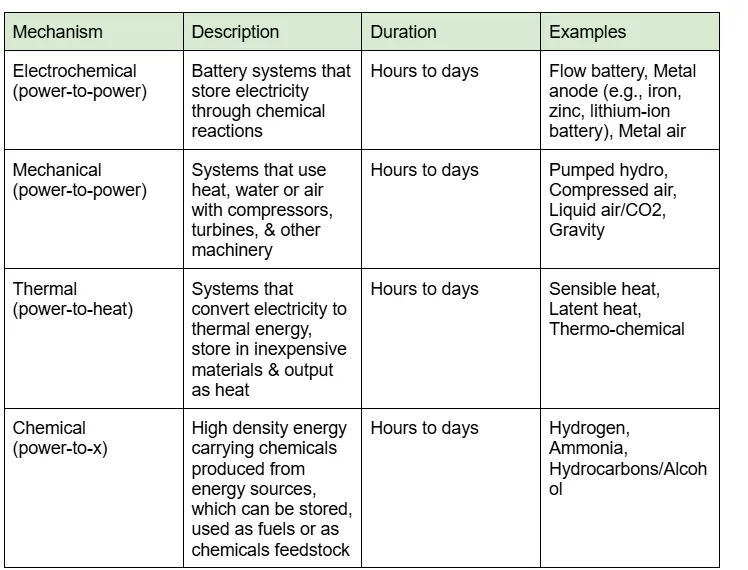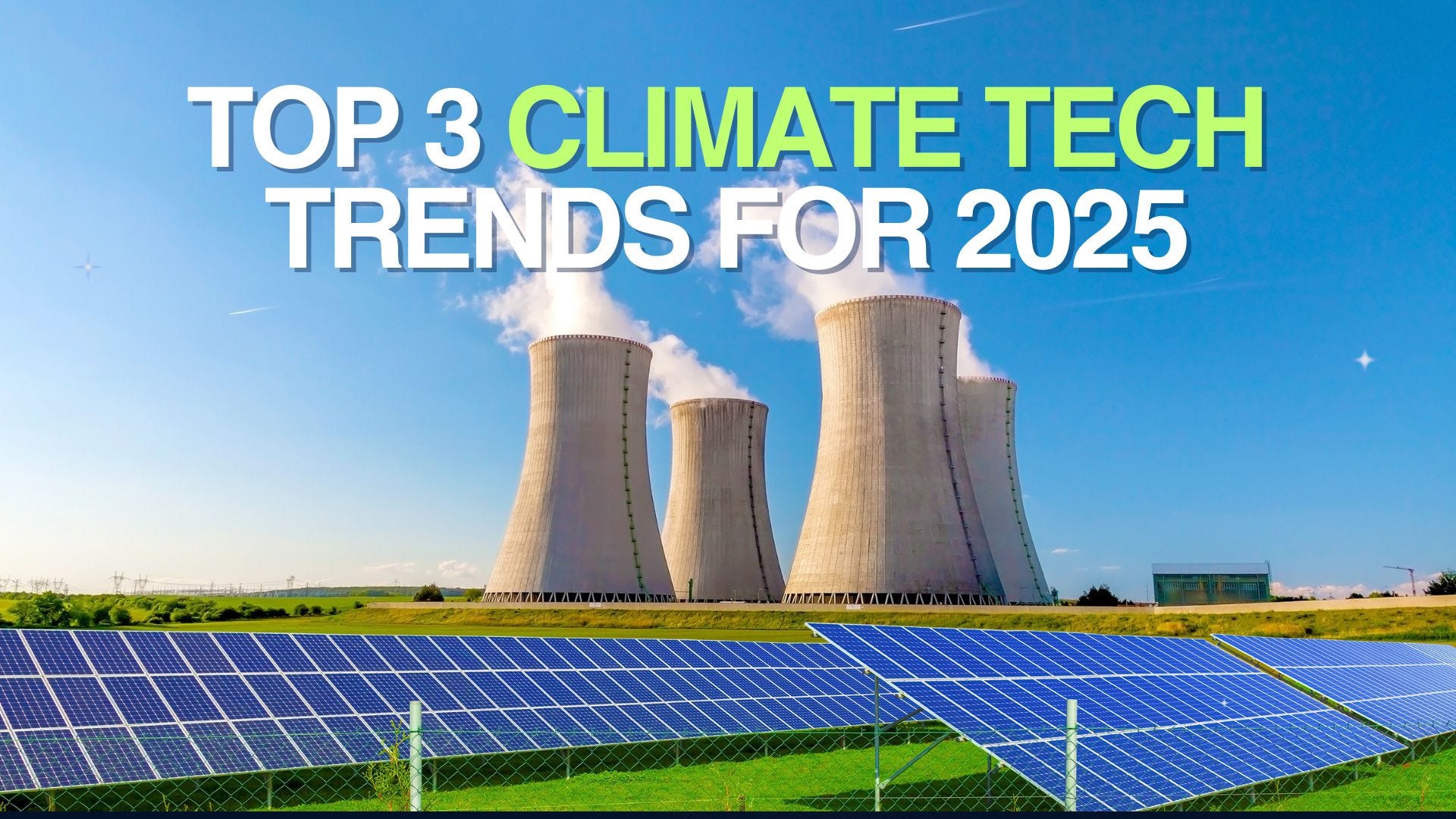Dear Reader,
As we step into 2025, the urgency of addressing climate change has never been more pronounced. From devastating wildfires to unpredictable weather patterns, we are all now constantly dealing with climate change, even if it doesn’t look obvious all the time!
Despite recent announcements by the US administration, the global shift toward sustainable solutions is accelerating, and 2025 stands to be a pivotal year for climate tech. From breakthrough innovations in carbon capture to the rapid expansion of clean energy technologies, the next few years will reshape industries, economies, and even our daily lives.
In this article, we explore the key trends poised to define the future of climate tech, offering a glimpse into the solutions that will drive the green transition—and the investments that will power them.
Climate Investment Trends for 2025
As per a study conducted by Sightline Climate in Jan 2025, the “big three” verticals — Transport, Energy, and Food & Land Use — have made up the majority of funding for climate tech (~80% of investment). For the first time in the last five years, Energy overtook Transport as the most-funded vertical in 2024 and may expect to attract the largest share of funding in 2025 as well.
We also hope to see more profitable exits of early venture investments, either to strategic acquirer or Private equity sponsors, which could encourage greater flows of risk capital into Climate-tech.
Breakthrough Climate technologies for 2025 globally
Sightline Climate’s study also indicated top climate technologies which might show breakthrough growth in innovation and use. The graph below shows the summary of the research results.

(Source: Sightline Climate)
Nuclear Tech
Nuclear energy is gaining traction as a reliable, green baseload option to power energy-intensive sectors like AI, with global momentum from countries like China and increasing regulatory support. It can be produced independently of weather or environmental conditions.
The nuclear renewal is further spurred by the concept of Small Modular Reactors (SMRs) – fission reactors with a peak output of 300 MWe (Megawatts electric) – which could play a key role in nuclear’s future expansion. This is because, being smaller than traditional facilities and requiring less cooling water and capital investment, they can offer greater flexibility when it comes to site selection.
Microsoft, for instance, has signed a 20-year power purchase agreement with Constellation Energy to purchase carbon-free electricity from the soon-to-be-restarted Unit 1 reactor at Three Mile Island.
Similarly, Amazon’s Climate Pledge Fund joined a US$500 million funding round in October to back a startup company, X-energy, that’s developing a Generation IV high-temperature gas-cooled pebble-bed nuclear reactor. X-energy’s Xe-100 is a small modular reactor (SMR) that is more compact, simpler and safer than traditional reactors.
Google has also announced a power purchase deal with Kairos Power to deploy 500 megawatts (MW) of nuclear power by 2030 using reactor technology.
In India, three startups: Pranos, Anubal Fusion, and Hylenr, are focused on tackling this problem. Although these startups are all in the very early stages of demonstrating their viability, the funding and media support they have received highlights the growing belief in nuclear fusion as a viable solution for the future.
Grid Load Management
Grid load management means balancing electricity supply and demand to ensure the stability and reliability of the power grid. With increasing electricity demand driven by factors like electrification, the expansion of AI-driven data centers, and industrial reshoring, grid load management has become a critical area of focus. In 2025, it is expected to prioritize the following key developments:
- Integration of Distributed Energy Resources (DERs) and Flexible Loads
The integration of DERs—such as rooftop solar, battery storage, and electric vehicles—into the grid will be a central focus. Utilities and grid operators will increasingly rely on compensations, dynamic rate designs, and other innovative models to incentivize the participation of DERs and flexible loads, ensuring an optimized energy flow. - Advancements in Smart Grid Systems
Technologies like non-wire alternatives (NWAs), microgrids, and virtual power plants (VPPs) will play a pivotal role in optimizing grid operations and enhancing resilience. These systems will enable decentralized energy management, reduce dependence on traditional infrastructure, and improve the grid’s ability to respond to fluctuations in supply and demand. - Data Centers as Grid Stabilizers
Data centers, known for their significant energy consumption, will increasingly adjust their power usage to support grid stability. By aligning their operations with renewable energy availability, data centers will help manage variability in energy generation and contribute to the integration of renewable resources. - Use of Artificial Intelligence and Machine Learning
AI and machine learning algorithms will become integral to VPP platforms. These technologies will manage diverse power generation assets, analyze customer behavior, and forecast demand to adjust energy output dynamically. This data-driven approach will improve efficiency and reduce operational costs.
Long Duration Energy Storage
Long Duration Energy Storage (LDES) refers to a diverse set of technologies capable of storing energy in various forms—electrochemical, mechanical, thermal, and chemical—with discharge durations of eight hours or more. These systems can retain energy for extended periods, ranging from hours to seasons, enabling them to address critical energy sector challenges. LDES is crucial for integrating renewable energy sources like wind and solar into the grid, ensuring reliability and stability by bridging the gap between intermittent generation and continuous demand.
Types of LDES
The types of LDES are explained below:

(Source: LDES Council)
Vasudha’s Take: Looking ahead to 2025, the climate tech landscape is primed for game-changing innovations. From nuclear breakthroughs to smarter grids and longer-lasting energy storage, the future is full of promise. But turning these advancements into real-world solutions will require bold investment and collaboration. The clock is ticking—how we respond today will shape the planet we leave for tomorrow.
Ostara in the News
- An article by Vasudha on expectations from the Union Budget 2025 outlining the key focus areas and expected policies was published in BW Sustainability World on January 30, 2025.
- A pre-budget quote by Vasudha was published in APN News on January 24, 2025.
- Vasudha joined a panel discussion on January 16, 2025 with leading EV experts to address key challenges in scaling India’s EV charging infrastructure. The conversation covered E3-wheeler charging standardization, AC vs. DC fast charging, public transport adoption, and the impact of the PM E-Drive Scheme. The panel was organized by Climate Angels.

















